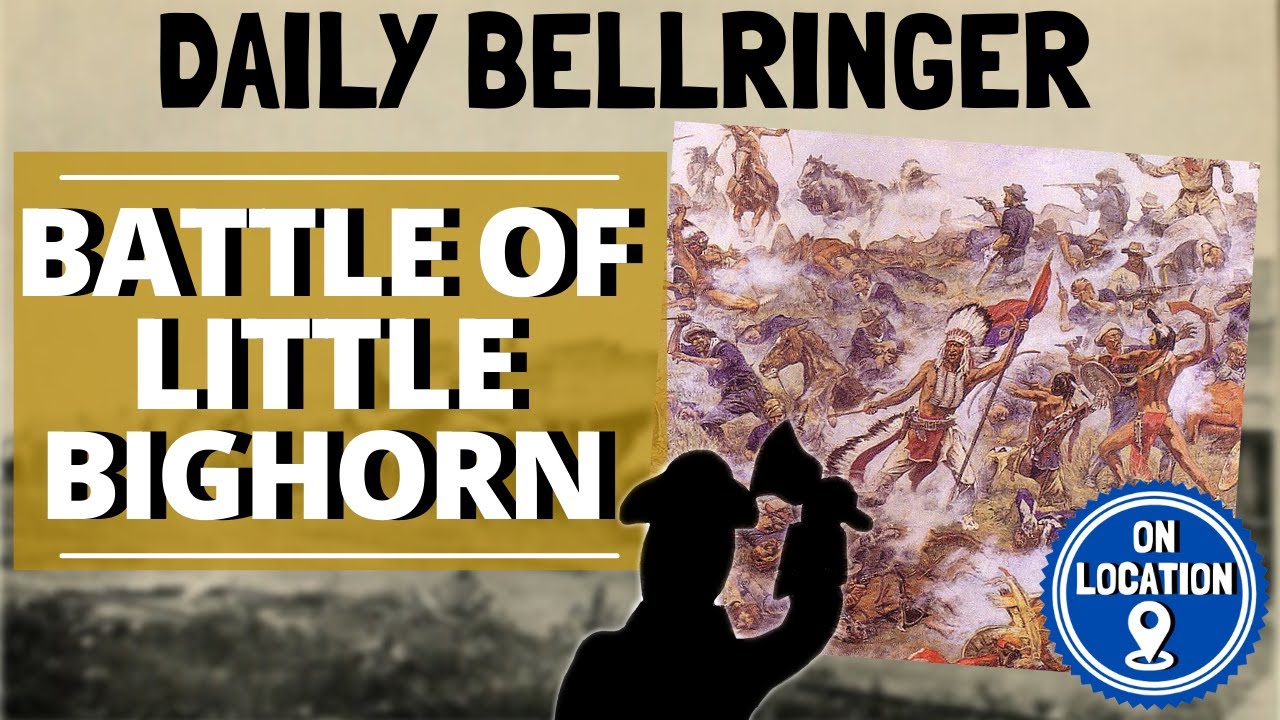Red Cloud's War: Oglala Lakota Tribe Fights For Their Land
Summary
TLDRRed Cloud's War (1866-1868) followed the discovery of gold near Bannock, Montana, leading to the creation of the Bozeman Trail, which cut through lands of the Lakota, Cheyenne, and Arapaho. Despite treaties, Chief Red Cloud of the Oglala Lakota resisted, initiating guerrilla attacks against U.S. forces. The war saw major conflicts, including the Fetterman Massacre, where 81 U.S. soldiers were killed. In 1868, the U.S. government signed the Treaty of Fort Laramie, creating the Great Sioux Reservation. The war marked another chapter in the conflict between Native Americans and expanding settlers.
Takeaways
- ⛏️ Gold was discovered near Bannock, Montana in 1863, leading to the development of the Bozeman Trail by John Bozeman and John Jacobs.
- 🚶 The Bozeman Trail passed through Powder River country, traditionally the territory of the Lakota, Cheyenne, and Arapaho people.
- 🤝 Despite attempted treaties, Chief Red Cloud of the Oglala Lakota saw them as weak and unacceptable, leading to conflict.
- ⚔️ Red Cloud's War was marked by guerrilla-style attacks against U.S. government forces starting in 1866.
- 🛡️ U.S. forces stationed at Fort Laramie and two other outposts faced heavy losses during the summer of 1866.
- 👨✈️ Captains William Fetterman and James Powell were ordered to provide relief for a wood train under attack by Red Cloud's warriors.
- 🪖 Fetterman fell into a decoy trap, leading to the complete destruction of his 81-man force by an estimated 1,000 to 3,000 Native warriors.
- 💥 Other skirmishes in the summer of 1867 included the Hayfield and Wagon Box fights.
- ✍️ The U.S. government decided to sign the 1868 Treaty of Fort Laramie, establishing the Great Sioux Reservation and granting hunting rights to the Lakota.
- 📜 Red Cloud's War was another chapter in the centuries-long conflict between Native Americans and westward-expanding settlers.
Q & A
What was the Bozeman Trail, and why was it developed?
-The Bozeman Trail was developed by pioneers John Bozeman and John Jacobs in 1863, after gold was discovered near Bannock, Montana. It stretched from Fort Laramie north through Powder River country, facilitating access to the goldfields for Euro-American miners and settlers.
Which Native American tribes were affected by the development of the Bozeman Trail?
-The Lakota, Cheyenne, and Arapaho people were affected by the encroachment of Euro-American miners and settlers along the Bozeman Trail, which passed through lands that were traditionally their exclusive domain.
Why did Chief Red Cloud reject the treaties proposed by the U.S. government in 1866?
-Chief Red Cloud saw the treaties proposed in 1866 as weak and unacceptable because they did not sufficiently protect the interests of the Oglala Lakota and other Native tribes. This led him to resist through warfare.
What was the strategy used by Red Cloud during his war against U.S. government forces?
-Red Cloud employed a strategy of hit-and-run, guerrilla-style attacks, targeting U.S. government forces stationed at Fort Laramie and other outposts during the summer of 1866.
What happened to Captain William Fetterman’s forces during Red Cloud’s War?
-Captain William Fetterman’s 81-man force was lured into a trap by a Lakota decoy party, including Crazy Horse. Fetterman chased them into the Peno Valley, where his entire force was wiped out by an estimated 1,000 to 3,000 concealed Native warriors.
Who was involved in the decoy party that lured Fetterman into the ambush?
-The decoy party that lured Fetterman into the ambush included Oglala Lakota warrior Crazy Horse. The decoys, some on ponies, taunted Fetterman's men by waggling their bare buttocks at the soldiers, enticing them to give chase.
What was the U.S. government's response to the escalating violence during Red Cloud’s War?
-In 1867, after additional skirmishes such as the Hayfield and Wagon Box fights, the U.S. government estimated that 20,000 soldiers would be required to defend both the transcontinental railroad and the Bozeman Trail. Instead, they opted for a peaceful solution and signed the 1868 Treaty of Fort Laramie with Red Cloud and other tribal leaders.
What were the key outcomes of the 1868 Treaty of Fort Laramie?
-The 1868 Treaty of Fort Laramie established the Great Sioux Reservation, west of the Missouri River, including the Black Hills of South Dakota. It also affirmed the Lakota's hunting rights in western Kansas and eastern Colorado.
How significant was Red Cloud's War in the broader context of U.S.-Native American conflicts?
-Red Cloud's War was one of many bloody conflicts over more than 300 years between Native Americans and westward-expanding settlers. It highlighted Native resistance to the U.S. government's encroachment on their lands and treaty violations.
What factors led to the U.S. choosing a peaceful resolution to Red Cloud’s War?
-The U.S. chose a peaceful resolution to Red Cloud’s War because the military realized that defending both the transcontinental railroad and the Bozeman Trail would require a large force of 20,000 soldiers, which was seen as impractical. As a result, they opted for negotiations, leading to the 1868 Treaty of Fort Laramie.
Outlines

Esta sección está disponible solo para usuarios con suscripción. Por favor, mejora tu plan para acceder a esta parte.
Mejorar ahoraMindmap

Esta sección está disponible solo para usuarios con suscripción. Por favor, mejora tu plan para acceder a esta parte.
Mejorar ahoraKeywords

Esta sección está disponible solo para usuarios con suscripción. Por favor, mejora tu plan para acceder a esta parte.
Mejorar ahoraHighlights

Esta sección está disponible solo para usuarios con suscripción. Por favor, mejora tu plan para acceder a esta parte.
Mejorar ahoraTranscripts

Esta sección está disponible solo para usuarios con suscripción. Por favor, mejora tu plan para acceder a esta parte.
Mejorar ahoraVer Más Videos Relacionados
5.0 / 5 (0 votes)






